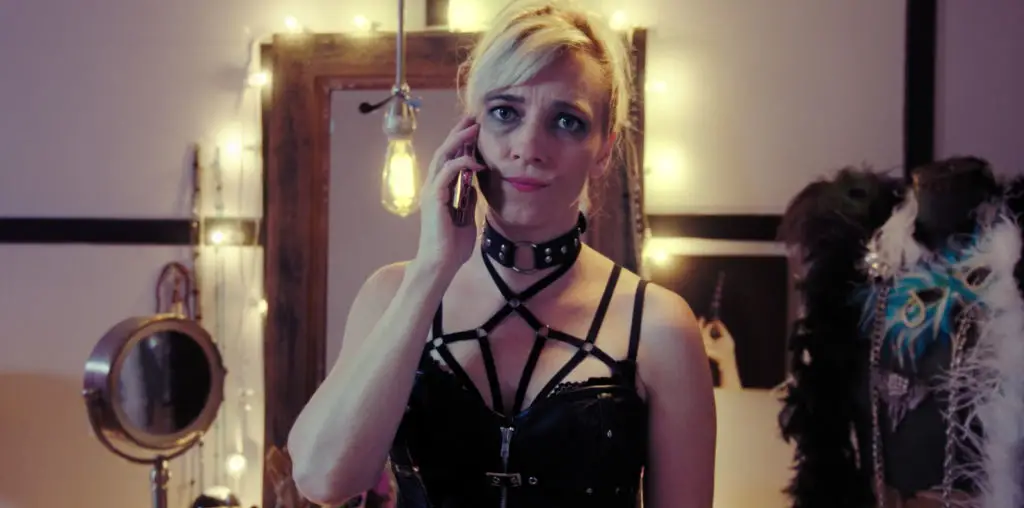
Few movies have experienced the intensity of critical evisceration as “Myra Breckinridge,” the free-wheeling 1970 adaptation of Gore Vidal’s best-seller. Torn apart by reviewers for its rampant vulgarity and a perceived incompetence at all levels, the film became infamous as one of the most hated productions of the 1970s.
But fast-forward 32 years and check out the current culture scene: Ozzy and Sharon Osbourne are invited to the White House, millions of Americans wake up each morning to Howard Stern, and the most popular cartoon show on TV is South Park. When viewed by contemporary standards (or the lack thereof), “Myra Breckinridge” is not only quite tame but also a work which was clearly three decades ahead of its time.
In retrospect, it is easy to understand why “Myra Breckinridge” was viewed with such disgust. The film’s central character is the homosexual writer Myron who undergoes a sex-change operation, becoming Myra. In her new identity, Myra moves to Hollywood and runs amok with omnivorous bisexual tastes. For 1970, the unapologetic on-screen depiction of anything involving the gay-lesbian-transgendered community was unprecedented and the rampant homophobia of that era was evident in the film’s reception. Furthermore, the film’s dark satiric message that Hollywood is a land of kitsch rather than culture went far beyond any previous film that skewered Tinseltown’s failings. Director Michael Sarne punctuated this message by liberally sprinkling snippets of old-time flicks throughout “Myra Breckinridge”: a cutesy Shirley Temple, fluttering Loretta Young, jaw-clenching Tyrone Power and fumbling Laurel and Hardy are presented as objects of derision and unintentional humor. For anyone who views Golden Age Hollywood as a lost Olympus would clearly be angered by the film’s apostasy towards the celluloid deities of yesteryear.
The humor in “Myra Breckinridge” is wildly over-the-top, most notoriously when the title character asserts her domination over a muscular stud by tying him down to a table and sodomizing him with a dildo. For a mainstream film of 1970, this kind of scenario was without precedent. Further aggravating the polite tastes of that time was the appearance of Mae West, who returned to films after a 27-year absence to star as a Hollywood talent agent who “auditions” hunky actors (including a bit player named Tom Selleck in his film debut). Again, it was thoroughly unusual to have a film with a sexually active septuagenarian calling the erotic shots and dropping heavy double-entendres (when informed that one of her aspiring clients stood six feet and seven inches, Mae West rolls her eyes and drools: “Never mind the six feet…let’s talk about the seven inches!”).
“Myra Breckinridge” also brought to films a deliberately campy style, with over-the-top performances by John Huston as a one-time movie cowboy-turned-crooked acting school owner (complete with a exaggerated Texas drawl and a panting for younger ladies), John Carradine as the stoned surgeon who creates Myra via the sex-change surgery (a parody of his many mad doctor roles), Andy Devine and Grady Sutton as a pair of Hollywood has-beens who mourn the good old days (an accurate reflection of their status in the film at that time), and, of course, Raquel Welch as the notorious Myra. Welch’s self-parodistic performance skewers the concept of yesteryear’s Hollywood glamour girl, complete with an outlandish wardrobe (gigantic hats and mannishly-tailored suits) that looks like it was lifted from a Carol Burnett take-off of a Joan Crawford melodrama. Welch’s Myra babbles about the glamour and glory of old-time Hollywood, yet her wickedly insincere delivery is clearly a parroting of canned platitudes harvested by studio publicists and swallowed by a population which did not know any better.
Strangely, the closest thing to normal here is Rex Reed’s performance as Myron. After Myra emerges from the sex-change operation, Myron hovers on the sidelines as a ghostly observer of the shenanigans. At one point, Myron receives a f******o from Myra (never explicitly depicted)…yet another scene which was held against the film.
Even at this late date, “Myra Breckinridge” continues to create embarrassment for its studio, 20th Century Fox. The film has never been released on home video and has barely been shown on cable TV. Yet “Myra Breckinridge” was clearly the forerunner for the rise of popular bad taste culture. In the years that followed its release, audiences slowly began to appreciate and accept the films of John Waters, “The Rocky Horror Picture Show,” “Eraserhead,” the MTV influences in music videos (think Madonna and nearly every rap performer) and pop culture (think Tom Green), and the Farrelly Brothers’ canon. “Myra Breckinridge” was hardly a bad film; indeed, the one thing it had going against it was being so far ahead of the curve.

Goddamn! You’re the ONLY person I’ve ever encountered who appreciates “Myra Breckinridge” in it’s actual context! Personally, I think the performances are incredible…West, Huston, etc…..but above all I think Raquel Welch’s performance as Myra is brilliant and by far the best performance she’s ever given on film.
And a blurb from my Film Threat review is on the front cover for this movie’s DVD release!